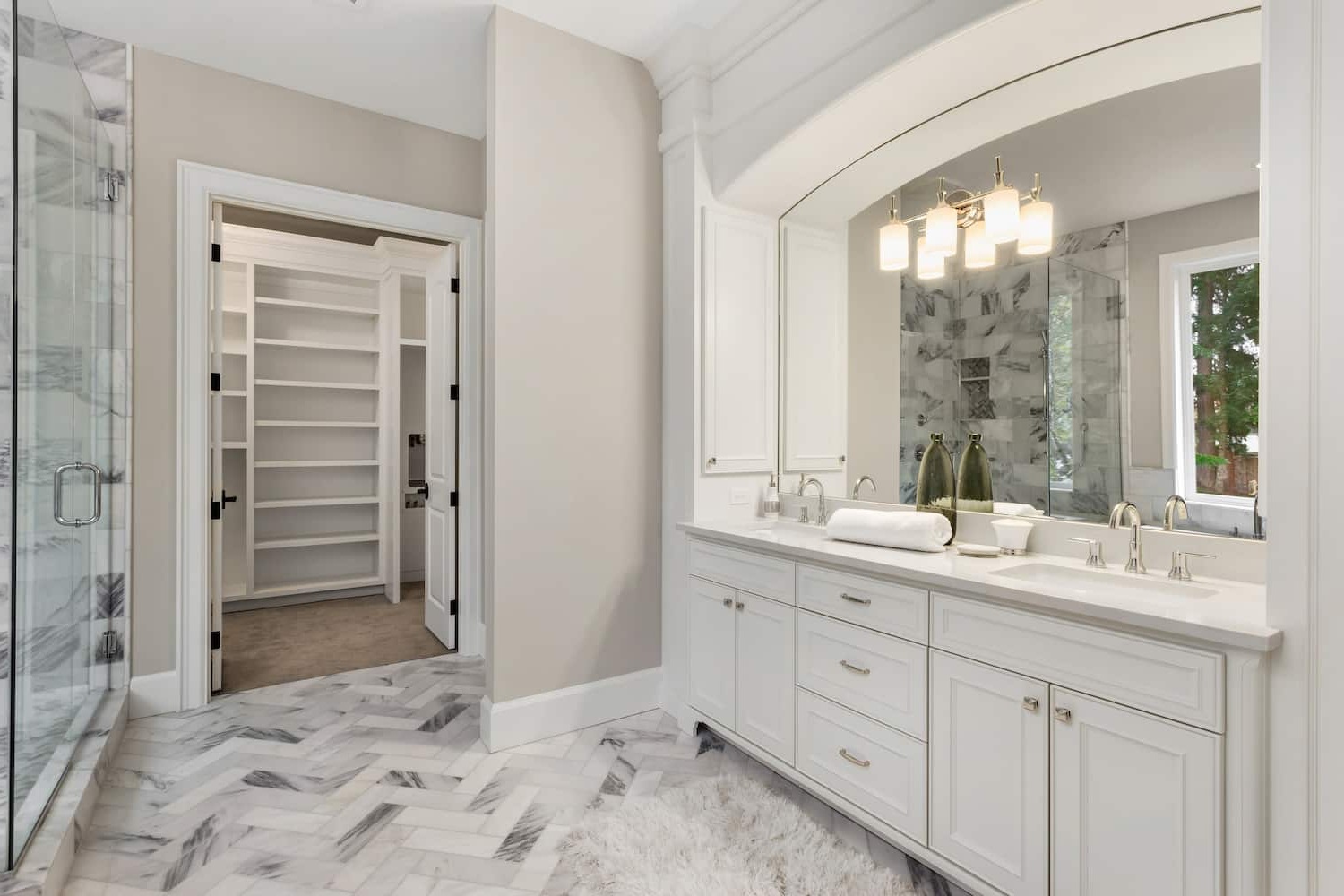Home>Ideas and Tips>Bauhaus Basics: Form Follows Function In Design


Ideas and Tips
Bauhaus Basics: Form Follows Function In Design
Published: October 21, 2024
Discover the Bauhaus movement's impact on modern design with its "form follows function" philosophy, emphasizing functionality, simplicity, and innovation.
(Many of the links in this article redirect to a specific reviewed product. Your purchase of these products through affiliate links helps to generate commission for Storables.com, at no extra cost. Learn more)
The Bauhaus movement, which emerged in the early 20th century, revolutionized the way we think about design. Founded in 1919 by Walter Gropius in Weimar, Germany, the Bauhaus school was a pioneering institution that sought to integrate fine arts, crafts, and technology into a unified approach to design. At its core, the Bauhaus philosophy emphasized the importance of functionality in design, encapsulated in the phrase "form follows function." This principle, which suggests that the shape of an object should primarily relate to its intended function or purpose, has had a lasting impact on modern design.
The Origins of "Form Follows Function"
The concept of "form follows function" was first articulated by American architect Louis Sullivan in the late 19th century. Sullivan believed that buildings should be designed with their purpose in mind, rather than adhering to traditional aesthetics. This idea was later adopted and popularized by his assistant, Frank Lloyd Wright, who further promoted it as a guiding principle for modernist architects.
The phrase "form follows function" became a battle cry for modernist architects after the 1930s. It implied that decorative elements, which architects call "ornament," were superfluous in modern buildings. Instead, the focus was on creating structures that were functional and efficient, without unnecessary embellishments.
Historical Context
During the late 19th and early 20th centuries, technology, tastes, and economics were rapidly changing. The forms of late-19th century buildings were still being worked out, based on innovation going all the way back to ancient Greek and Roman architecture. It was clear to Sullivan that a new form for buildings was needed, one that would come from the function of a building rather than historical precedent.
The modern structural steel skyscraper, developed in late 19th-century Chicago, exemplified this new form. The Guggenheim Museum, designed by Frank Lloyd Wright, is another iconic example of how "form follows function" was applied in practice. The spiral shape of the museum was intended to allow visitors to easily view the artwork within, demonstrating how the building's design was driven by its functional purpose.
The Bauhaus Movement
The Bauhaus movement, which flourished from 1919 to 1933, was deeply influenced by Sullivan's principle. The school's founders aimed to modernize art production and create functional, accessible, minimalist products. They believed that design should be integrated with industrial production processes to make products accessible to the greatest number of people.
Key Principles
-
Functionality and Practicality
- The Bauhaus emphasized simplicity and usefulness in design. Products were designed to meet specific needs without unnecessary ornamentation. This approach was driven by the belief that form should follow function, ensuring that each object served its intended purpose effectively.
-
Mass Production
- The school encouraged mass production techniques to make products affordable and widely available. This integration of art and industry allowed for the creation of standardized materials and processes, which were essential for large-scale production.
-
Aesthetics and Innovation
- Despite the focus on functionality, aesthetics were still important. Artists were encouraged to create pieces that surprised others while maintaining simplicity and minimalism. The use of new materials like wood, steel, and glass was also emphasized to achieve innovative designs.
-
Craftsmanship Integration
- Craftsmanship was seen as a tool to achieve the products' functions and objectives. The school encouraged students to idealize and plan the entire production process, ensuring that every step from design to execution was considered.
-
Holistic Approach
- The Bauhaus took a holistic approach to design, considering social and human elements alongside technical knowledge and art concepts. This multidisciplinary approach allowed for a comprehensive understanding of how design could impact people's lives.
Applying "Form Follows Function" in Practice
Read more: Organic Forms In Art Nouveau Home Design
Architecture
Bauhaus architecture is characterized by clean lines, simple geometric shapes, and a functional approach to design. Buildings were designed with large open areas, many windows, and simplified color schemes. The use of steel, glass, concrete, and other modern materials reflected the school's quest for integrating art and technology.
For example:
- Houses for the Working Class: The Bauhaus proposed simple, functional houses for the working class. These houses were designed to meet the needs of their occupants while being affordable and easy to produce.
- The Dessau Building: This building is a prime example of Bauhaus architecture. It features flat roofs, polished smooth lines, and an emphasis on functionality over aesthetics.
Industrial Design
Industrial design at the Bauhaus also adhered to the principle of "form follows function." Products were designed to be both functional and aesthetically pleasing. For instance:
- Automobile Design: The design of an automobile like the Fiat Multipla was influenced by its function. Its shape was partly due to the desire to sit six people in two rows.
- Simple Objects: Objects like screwdrivers, pencils, and teapots were reducible to a single optimal form, precluding product differentiation. However, this approach also raised questions about planned obsolescence and unnecessary durability.
Graphic Design and Typography
Bauhaus played a crucial role in the evolution of graphic design and typography. Visual clarity and the use of geometric fonts influenced the design of logos, posters, and editorial layouts. For example:
- Herbert Bayer's Universal Typeface: In 1925, Herbert Bayer designed a universal Bauhaus typeface at the request of Gropius. This typeface was functional, accessible, and noted for combining upper and lowercase characters into one character set while eschewing serifs.
Legacy of Bauhaus
The Bauhaus movement had a profound impact on modern design. Its principles continue to influence architecture, furniture design, and art today.
Influence on Modern Design
-
Functionality and Simplicity:
- The Bauhaus principle "form follows function" emphasized the importance of functionality in design. This philosophy promoted simplicity and efficiency in object and building design.
-
Graphic Design:
- Bauhaus' influence on graphic design is evident in its emphasis on visual clarity and geometric fonts. This approach has shaped logo design, poster art, and editorial layouts.
-
Modern Architecture:
- Bauhaus' innovative approach to architecture has left an indelible mark on modern architecture. Clean forms and industrial materials are hallmarks of this style.
-
User-Centered Design:
- Concepts like User-Centered Design are important for designers today as they aim to create products that meet user needs by combining functional elements with aesthetic features that improve the user experience.
Conclusion
The Bauhaus movement's emphasis on "form follows function" has had a lasting impact on modern design practices. By integrating art and industry while focusing on simplicity and functionality, the Bauhaus school created a holistic approach to design that continues to influence contemporary design principles.
As designers today strive for innovative solutions that balance aesthetics with functionality, they draw upon the foundational principles laid down by the Bauhaus movement. Whether in architecture or industrial design, graphic design or user experience, understanding how form follows function remains essential for creating effective and beautiful products that serve their intended purpose.
In summary:
- Historical Context: The concept of "form follows function" originated with Louis Sullivan but gained prominence through Frank Lloyd Wright's work.
- Bauhaus Principles: Functionality, mass production simplicity aesthetics innovation craftsmanship integration were key principles guiding Bauhaus design practices.
- Applications: Architecture industrial design graphic typography all benefited from Bauhaus emphasis on practicality clarity innovation.
- Legacy: Modern design continues influenced by Bauhaus holistic approach emphasizing functionality simplicity visual clarity geometric forms.
By embracing these principles we can create designs that not only serve their purpose but also contribute positively towards enhancing our environment making life easier more enjoyable for everyone involved.
Was this page helpful?
At Storables.com, we guarantee accurate and reliable information. Our content, validated by Expert Board Contributors, is crafted following stringent Editorial Policies. We're committed to providing you with well-researched, expert-backed insights for all your informational needs.














0 thoughts on “Bauhaus Basics: Form Follows Function In Design”